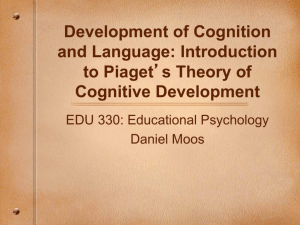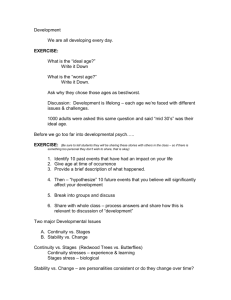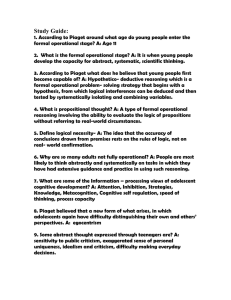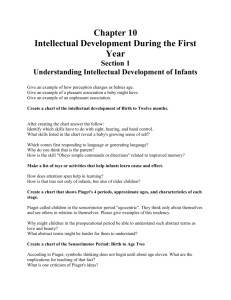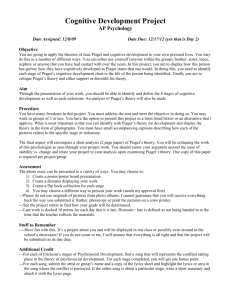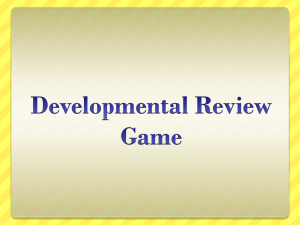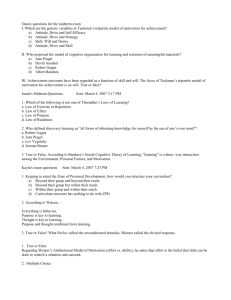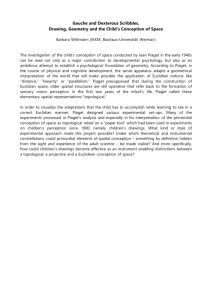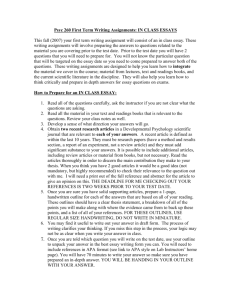Review Questions. 1. In Piaget's theory, what are the sources of
advertisement
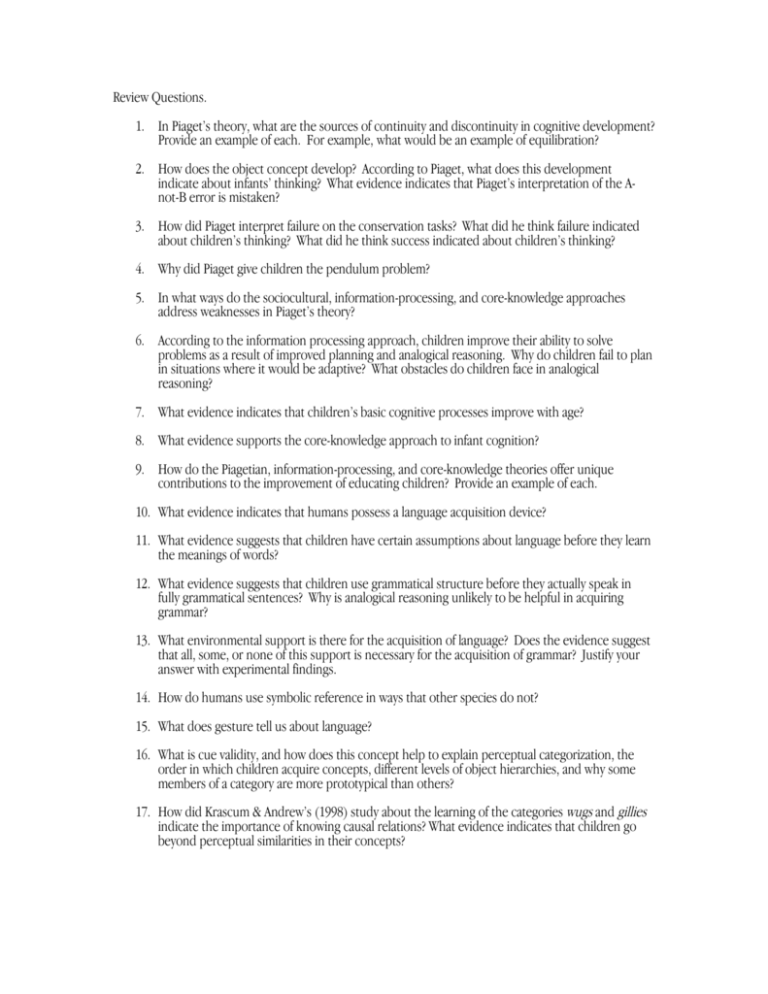
Review Questions. 1. In Piaget’s theory, what are the sources of continuity and discontinuity in cognitive development? Provide an example of each. For example, what would be an example of equilibration? 2. How does the object concept develop? According to Piaget, what does this development indicate about infants’ thinking? What evidence indicates that Piaget’s interpretation of the Anot-B error is mistaken? 3. How did Piaget interpret failure on the conservation tasks? What did he think failure indicated about children’s thinking? What did he think success indicated about children’s thinking? 4. Why did Piaget give children the pendulum problem? 5. In what ways do the sociocultural, information-processing, and core-knowledge approaches address weaknesses in Piaget’s theory? 6. According to the information processing approach, children improve their ability to solve problems as a result of improved planning and analogical reasoning. Why do children fail to plan in situations where it would be adaptive? What obstacles do children face in analogical reasoning? 7. What evidence indicates that children’s basic cognitive processes improve with age? 8. What evidence supports the core-knowledge approach to infant cognition? 9. How do the Piagetian, information-processing, and core-knowledge theories offer unique contributions to the improvement of educating children? Provide an example of each. 10. What evidence indicates that humans possess a language acquisition device? 11. What evidence suggests that children have certain assumptions about language before they learn the meanings of words? 12. What evidence suggests that children use grammatical structure before they actually speak in fully grammatical sentences? Why is analogical reasoning unlikely to be helpful in acquiring grammar? 13. What environmental support is there for the acquisition of language? Does the evidence suggest that all, some, or none of this support is necessary for the acquisition of grammar? Justify your answer with experimental findings. 14. How do humans use symbolic reference in ways that other species do not? 15. What does gesture tell us about language? 16. What is cue validity, and how does this concept help to explain perceptual categorization, the order in which children acquire concepts, different levels of object hierarchies, and why some members of a category are more prototypical than others? 17. How did Krascum & Andrew’s (1998) study about the learning of the categories wugs and gillies indicate the importance of knowing causal relations? What evidence indicates that children go beyond perceptual similarities in their concepts? 18. What tasks indicate that 3-year-olds and autistic children have difficulty with false beliefs? What evidence leads researchers to believe that autistic children’s difficulty with false beliefs is caused by something more than a deficit in general intelligence? 19. What evidence indicates that infants can compare very small numerical sets? What process is most likely used when infants appear to be adding? When children learn to count, they seem to understand certain principles. Which principles are acquired first, and which last? 20. What evidence suggests that children’s initial spatial reasoning is egocentric and only later landmark-based? 21. What does the IQ score indicate? From knowing a young child’s IQ, what other things can you reasonably predict about the child? 22. What is the HOME and what hypotheses has it been used to test? When does the HOME test correlate with IQ? 23. What strategies do children use in reading and addition, and how do children choose among these strategies (e.g., which strategy is fastest and which is the most reliable strategy to use on hard problems)? How is a perfectionist child’s use of strategies different from that of a good student and not-so-good student?

